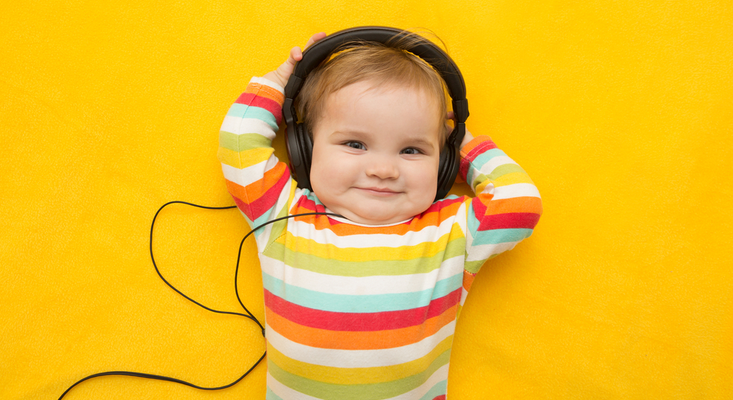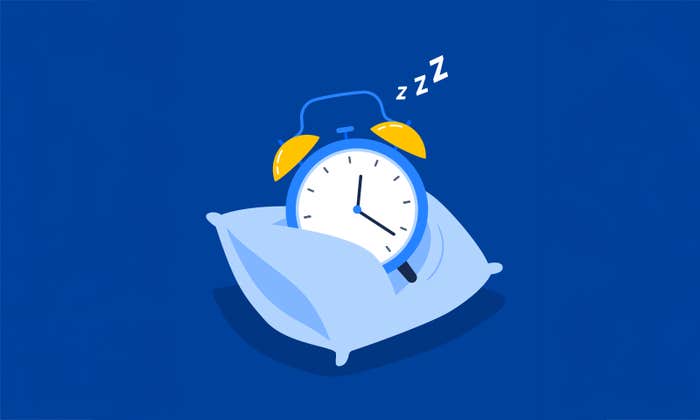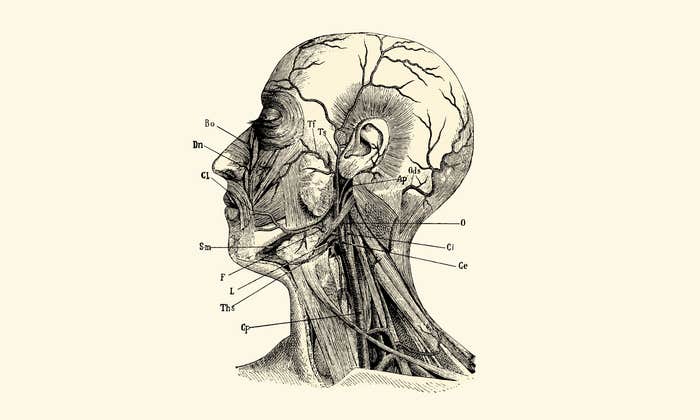Take a walk on a busy avenue and you hear either traffic whizzing by or creeping in a honk-laden crawl. Add the hissing of pneumatic bus brakes, distant sirens, the boom-boom of overloud car stereos, the occasional car alarm, music coming from shops you pass, the beeping of a reversing delivery truck. All are part of the fabric of city life.
These sounds do not meet or exceed the generally accepted threshold of “unsafe.” They are not novel and alerting. They are ongoing and have generally consistent acoustic properties over time. These are the sorts of sounds most would consider “background noise.” For this reason, we tend to ignore them. We tune them out. But are we really tuning them out, or are we simply living our lives in a constant state of alarm?
We have all experienced not noticing a sound until it goes away. Often it is an air conditioner or an idling truck. The air conditioner cycles off or the ignition is cut, and suddenly we “hear” the silence. And we sigh in relief. We momentarily revel in the peace until it starts up again or is replaced by the next aural annoyance. If our ears are not being damaged and we can mostly tune it out, should these noises concern us? We should indeed notice it and be concerned for the sake of our brains.

A noisy environment has many underrecognized negative impacts that have little to do with hearing per se. Chronic noise exposure, such as might be experienced by individuals who live near an airport, can lead to an overall decrease in perceived quality of life, increased stress levels along with an increase in the stress hormone cortisol, problems with memory and learning, difficulty performing challenging tasks, and even stiffening of blood vessels and other cardiovascular diseases. According to the World Health Organization, noise exposure and its secondary outcomes such as hypertension and reduced cognitive performance are estimated to account for an astounding number of years lost due to ill health, disability, or early death.
Noise disturbs learning and concentration. Students attending public schools in New York City had markedly different reading outcomes depending on whether their classroom was on the side of the school that fronted a busy elevated train track or on the other side of the school, which was shielded from the train noise. Students on the noisy side lagged 3 to 11 months behind their peers in reading. In the wake of these findings, the New York Transit Authority installed rubber padding on the railroad tracks near the school and the Board of Education installed noise-abatement material in the noisiest classrooms, together reducing noise levels by about 6 to 8 decibels. The reading-level difference soon vanished.
The effect of noise is not limited to auditory or language tasks like reading. In one experiment, subjects were asked to track a visual target, a moving ball, on a computer screen with a mouse. Meanwhile, other balls were simultaneously roving around on the screen. Participants who had experienced long-term noise exposure as part of their occupation had a more difficult time with the task, especially when the task itself was accompanied by random noises; they were slower and unable to keep as close to the target ball.
In Why We Sleep, University of California, Berkeley sleep scientist Matthew Walker calls the lack of proper sleep “the greatest public health challenge we face in the 21st century.” Sleep is becoming more recognized as crucial for our health, as it affects our cardiovascular system, our immune system, and our ability to think. Noise is one of the biggest culprits keeping us from a good night’s rest. Noise—even at fairly low sound levels—has a harmful impact on quantity and quality of sleep. Noise keeps us awake longer and awakens us earlier. While sleeping, noise in the environment affects the quality of sleep, prompting body movements, awakenings, and increased heart rate. Traffic noise can shorten periods of REM (dream) and slow-wave (deep) sleep, and diminish one’s perception of the restfulness of a night’s sleep.
In our waking lives, the insult of “safe” noise to the sound mind can be especially pernicious for children. Children are masters of language learning. Parents are gobsmacked at the short amount of time that elapses between observing their child say their first word to their speaking in full sentences. Sound to meaning connections are formed with great rapidity. Children cannot help learning the languages they are exposed to—even more than one. But what if the sounds children are exposed to at this critical age are meaningless?
This question is difficult to address in humans because it is impossible to control noise levels adequately in a real-world setting. However, we can answer questions like this in animal experiments. By controlling the duration, intensity, and quality of sound exposure, it is possible to get a direct look at how the electrical signals—the currency of the nervous system—in the brain are affected. Just what happens to our sound minds when we are exposed to “safe” noise? And are these effects transient or permanent?
Noise exposure accounts for years lost due to ill health, disability, or early death.
Typically, by adulthood, the auditory cortex of a rodent is organized tonotopically. That is, it’s arranged like a piano keyboard. Low pitches on one end, high pitches on the other. However, early in life, low- and high-pitch sounds have not yet settled into their cortical homes. Developing rodents were raised in an environment with continuous 70 dB noise, which is considered a “safe” level of noise by the National Institute for Occupational Safety and Health. By the time the rodents reached maturity, their auditory cortices were still undifferentiated in terms of tonotopy; the low- to high-pitch gradient had not formed.
This raises concerns for human babies who spend time in an environment we might consider noisy but not “damagingly” noisy, like a neonatal intensive care unit (NICU). What might happen to a premature baby’s auditory cortical organization as she listens to the beeps and clatters of medical monitoring systems, ventilators, and pagers rather than typical intrauterine sounds like rhythmic heartbeats, digestive noises, and the filtered voice of her mother that she would still be enjoying if born full term? Preterm infants can have a host of developmental challenges, including language and cognition, that may be exacerbated by this early noise exposure.
Scientists have introduced measures to mitigate the noisy NICU atmosphere. In one study, the sounds of the mother’s heartbeat and voice were piped into the incubator. Babies with exposure to these “good” sounds along with the bad had a more fully developed auditory cortex than the infants who heard only the bad sounds. Live music performed in the NICU also stabilized babies’ heartbeats, reduced stress, and fostered sleep.
Cortical map disorganization need not be permanent. In rodents whose tonotopic maps were disorganized by noise, once the noise was removed, the tonotopic organization of the cortex resumed afresh. Similarly, after noise damage, cortical map disorganization can be minimized by exposure to an enriched auditory environment—reminiscent of the positive effect of enriched sounds for babies in the NICU. The sound mind is constantly reinventing itself.
Does susceptibility of the auditory brain to “safe” noise diminish later in life? Adult animals were exposed to “safe” levels of noise, again in the 60–70 dB range, for several weeks. Their hearing threshholds did not change, but the way the auditory cortex responded to sound changed, reflecting a disorganized tonotopic pitch-processing mechanism. The frequencies present in the noise took over the real estate in the brain that rightfully belonged to other frequencies. Thus, damage done by “safe” noise is not limited to sensitive periods during development but can affect adults as well.
Given what we know about the biological damage of “safe” noise, we should reconsider the widespread use of noise generators, especially for the developing brain. Often used to keep people, including babies, from being awakened by household sounds, these devices, running eight or more hours at a time, might be blunting the sound mind and may have a long-term impact on our ability to effectively derive meaning from sound.
The insult of “safe” noise to the sound mind can be especially pernicious for children.
We should be concerned with noise inside the head as well as outside. Sounds do not arrive on a blank slate. Like the static between stations on the radio dial as we tune to the ball game or music channel, the brain is never quiet. There is always a base level of background activity—idle-state neural firing—that the sound mind needs to “tune” through. The neural response to sound must overcome this background electrical activity for the sound to be registered, so it is important that the idle-state activity not be overwhelming.
Our Brainvolts lab found an unexpected link between the size of this background brain activity and language development. Maternal education often patterns with the extent of language stimulation a child is likely to experience. It is also widely used as a proxy for socioeconomic status. Divided on the basis of maternal education, children of more educated mothers have a lower level of background activity—a less noisy brain. These children also had more precise processing of sound ingredients. That is, learning to make effective connections between sound and its meaning is likely to lead to a clearer signal and reduce the background neural activity so that effective and precise sound processing can take place.
Families of low socioeconomic status risk being exposed to a less rich linguistic environment and tend to live in noisier neighborhoods. Maybe the background noise level of the brain becomes amped up from long-term exposure to traffic and train noise, proximity to industrial sites, and crowded housing that track with lower income. Support for this interpretation comes from animal experiments in which noise exposure led to an increase in spontaneous brain noise—a sort of hyperactivity of the brain—in the auditory midbrain and cortex. So noise inside the brain can be caused by noise outside the brain. A higher baseline level of internal noise is competing for “headspace” with important sounds like speech. A lifetime of noise exposure and linguistic understimulation, in a vicious cycle, can compromise the ability to make sense of sound.
What can be done about noise pollution, and what can we do to mitigate its effects on our sound mind? Job number one is to recognize noise as a powerful and detrimental force, even when it is not the type that makes us clap our hands over our ears. Noise is virtually inescapable, so solutions are not easy. But reducing noise is something we can strive for. There are steps we can take to do this through our own behavior, through technology, and through enrichment. The first step is to simply become more aware of sound. Were you aware of the potential damage of exposure to “safe” levels of noise?
Download a sound-level measuring app on your smartphone and get a sense of your soundscape at home, at work, during your commute, and at the gym. As you become more aware of the sounds around us, ask, “Is this necessary?” Does our clothes dryer really have to speak to us? Is it essential for the car to chirp or honk every time we lock or unlock it? How to disable it is right there in the manual—it just takes a minute. Does Phyllis have to hold her phone at arm’s-length on speakerphone, shouting as she walks down the street? Does everyone need to hear Erik’s video game?
A hundred years ago, if we wanted to hear music, we would need to seek out a concert or, much more likely, play it ourselves. There was always an element of active engagement. We had to make time for music, and our time was rewarded with gratification—and by increased activity in the reward circuitry of the limbic system. Dopamine is released, positively reinforcing it, making it an activity we return to. Now, music has moved from the foreground to the background, from a signal to a noise. Music is imposed on us in airports, in elevators, at the grocery store, and when put on hold on the phone. Instead of actively engaging with the music, we find ourselves treating it as one more source of noise to ignore, to grind our teeth to. When it simply joins the unwanted grating chorus of uninvited sounds, it is not tuning our brains through active engagement, not teaching us to pick up on the important details in sound, nor engaging our emotions fruitfully. We have learned to ignore it. How can that be good for our evolving sound mind?
Reducing noise is something we can strive for. Here are the steps we can take.
A straightforward way to reduce noise is to use sound-isolating earplugs. Most are made of foam, and their one-size-fits-most design can work well, although I personally have difficulty with them because my ear canals are so twisty they fall out. I prefer the wax earplugs that mold to the contour of my ear canal and stay in better, especially at the gym or while I sleep in a noisy place. You can also look into custom-fitted earplugs. Often called “musician earplugs,” these are designed to lower the sound level across the entire frequency range equally, so you don’t selectively lose the high or low frequencies. Some custom-fitted earplugs have exchangeable filters to give you more or less sound reduction depending on the circumstance. For example, you might use an 8 dB filter while riding the subway but a 25 dB filter when playing drums. During the years-long construction period outside my office window, I wore my custom earplugs daily. This hugely reduced how much the noise bothered me.
Active noise-canceling headphones excel at mitigating continuous noise sources like airplane or train noise. They do so by generating out-of-phase sounds that are played simultaneously with the unwanted sound. The two opposing sounds cancel one another out but can also create more sound pressure. Some people, me included, tend to feel fatigued after wearing these devices for a while. Both active and passive noise-attenuating earplugs have varieties with audio playback capabilities—you can listen to music, audiobooks, or podcasts at the lower volume a reduced background noise level affords you.
It’s true that many of the best options are also the highest in price. Noise-isolating custom ear molds cost a lot more than off-the-shelf earbuds. In-ear audio monitors are expensive. Noise-reducing hearing aids add cost to an already pricy healthcare expenditure. Quieter hair dryers are out there, but they are double the cost of run-of-the-mill models. But until we get better as a society at caring about noise, products like these will remain niche and expensive. In the meantime, there are low- or no-cost things that we can do for ourselves and for our neighbors.
As recently as the 1970s, only a smattering of professional hockey players wore helmets and major league baseball players would shed theirs as soon as they reached base. Today, a helmetless hockey player seems inconceivable. Baseball players wear their helmets while on the basepaths and varieties with extended jaw guards have become the norm. We now appreciate the importance of protecting ourselves against concussions. Today, even most macho halfwits wear seatbelts, and more attention is being paid to safety in sports even to the extent that, for better or worse, contact sports are on the wane. It is my hope that we stop being so cavalier about noise in the same way.
Nina Kraus is the author of the new book, Of Sound Mind: How Our Brain Constructs a Meaningful Sonic World. A neuroscientist who has done pathbreaking research on sound and hearing for more than 30 years, Kraus is Hugh Knowles Professor of Neurobiology, Communication Sciences, and Otolaryngology at Northwestern University.
Excerpted from Of Sound Mind: How Our Brain Constructs a Meaningful Sonic World by Nina Kraus, published by The MIT Press in 2021.
Lead image: Alrandir / Shutterstock


























